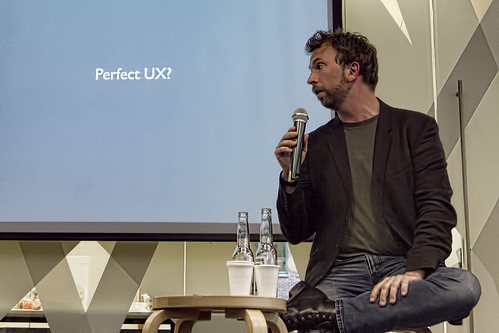Your design resume is awesome but I don’t care
I’ve spoken a lot in the last few days about what user experience is. My best descriptions don’t include those words any more. I’m finding that I can only express the qualities I look for when I’m hiring UX professionals in terms of life experiences. Meaning that I tend to prioritise specific academic qualification or checklists of skills much lower than I prioritise the things that make you the person that you are. And I have to acknowledge that that makes it almost impossible for potential candidates to formally structure an approach that I might respond positively to. My assessment of what makes an engaging resume or portfolio does seem to be at odds to the majority of hiring managers in the field or, more specifically, recruiters. I’m grateful to my UXPA mentees for pointing that out, since otherwise I may just consider that everyone is writing terrible resumes which is why they’re finding it difficult to penetrate into the first level of human interaction with me – an interview.
I’ll be honest. A lot of resumes I see are terrible. But worse than that, a lot of them are just not very compelling. I don’t find anything in them that makes me want to invest the effort I really should. There’s nothing in there that makes me interested in who that person is. I try, and fail, to respond positively to a checklist of application software, when, frankly, it’s meaningless to me. I have an expectation that anyone who is applying for a design role can manage application software. If you can’t, I’ll teach you how. That’s not the thing that makes you a designer. What makes you a designer is your ability to think, articulate, challenge, interrogate, evolve, be bold, be different, be confident, be accountable and have the courage of your conviction. I really need to see something of that in your approach to me, since that’s really what differentiates you. It might just be how you word a personal statement or whatever you call it. It might be in the narrative that forms the basis of your portfolio. It might be that you’ve got an interest in garden furniture. Really, I can’t tell you what it looks like, but I have to respond to you at a level more significant than simply a well-structured document. I have to work with you. I have to like you. So give me a sense of what that might be like, rather than letting me know how good you are at using Axure.
In the end, I can only offer a personal opinion. I’m the least professional professional I know. But since I’m hiring designers, it might be useful, or at least interesting. I’m willing to accept it might actually just be more confusing. But if you were considering working with me, at least you now know something about the things that make me the person that I am.

